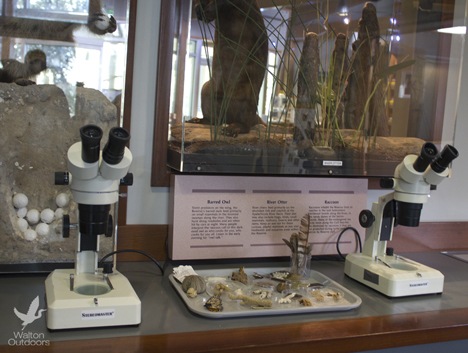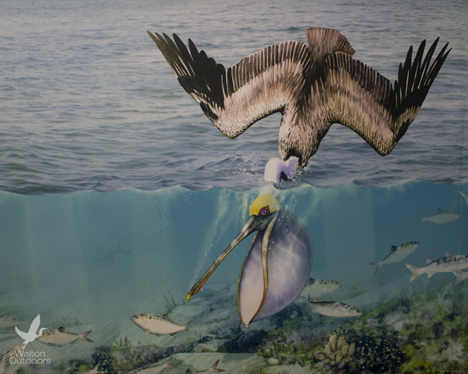
Hands on displays and artifacts a creative learning experience
The Apalachicola River, Bay and coastal ecosystems are vast and diverse. Successfully managing such diversity is complex effort managed by several State and federal agencies. In 1979 the Apalachicola National Estuarine Research Reserve (ANERR) was formed to manage the more than 234,715 acres spanning across Franklin, Gulf and Calhoun counties in Northwest Florida.
ANERR includes the lower 52 miles of the Apalachicola River and floodplain, as well as most of Apalachicola Bay. It includes lands managed by the U.S. Fish & Wildlife Service (USFWS), Florida Fish and Wildlife Conservation Commission (FWC), Florida Park Service, Northwest Florida Water Management District (NWFWMD) and Department of Environmental Protection’s Office of Coastal and Aquatic Managed Areas (CAMA).
ANERR has a tremendous variety of recreational opportunities, including boating, canoeing, kayaking, fishing, hiking, camping, swimming, picnicking, and wildlife viewing. Some of these opportunities, such as visiting the beach or swimming are most accessible by visiting one of the area’s State Parks or National Wildlife Refuges. However many can be enjoyed on your own just by going to the nearest boat ramp or dock.

The objectives of ANERR are stewardship, research, training, and education. One of the educational efforts was to create a public facility to share knowledge and educate students on our environment. With the planning stages taking close to 10 years, the doors of the Apalachicola Environmental Education and Training Center were opened in February 2011.
The Apalachicola Environmental Education and Training Center is nestled along Apalachicola Bay amidst scrub live oaks and saw palmetto. It features 18,000 square feet of learning space, including two working wet and dry research laboratories. Representing the river, bay and gulf habitats found in Apalachicola, the center features three large walk-around tanks that hold more than 1,000 gallons and house a variety of native plant and aquatic life.
A mural spanning more than 50 feet colorfully demonstrates the connectivity among the river, bay and gulf habitats as one continuum instead of discreet, separate systems. The mural was created using photographs and hand painted images that were digitally combined.
Additional exhibits highlight the rich history of the area with descriptions and testimonials of life working on the bay and waterfront. Artifacts such as bones, native American pottery, turpentine pots are just a few of the many relics on display. Bones, shells are available for hands on learning.
An auditorium and an outside amphitheatre for workshops and presentations is onsite. Educational offerings include ongoing guest lecturers for the community and coastal management workshops for environmental professionals including master naturalist classes.
For more information about the research and education programs offered, please contact the Reserve at (850) 670-7700. Click here to learn more.
108 Island Drive
Eastpoint, FL 32328
(850) 670-7700
Hours: Tuesday – Saturday, 9 a.m. – 4:00 p.m.
Admission is free.
